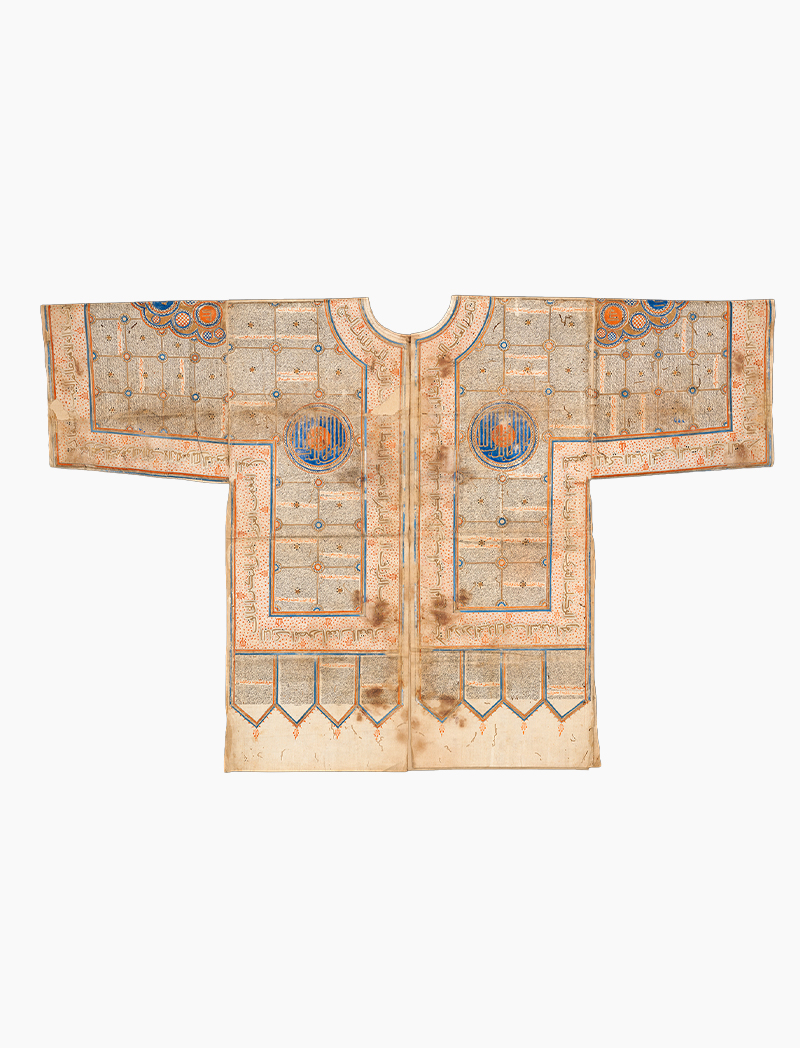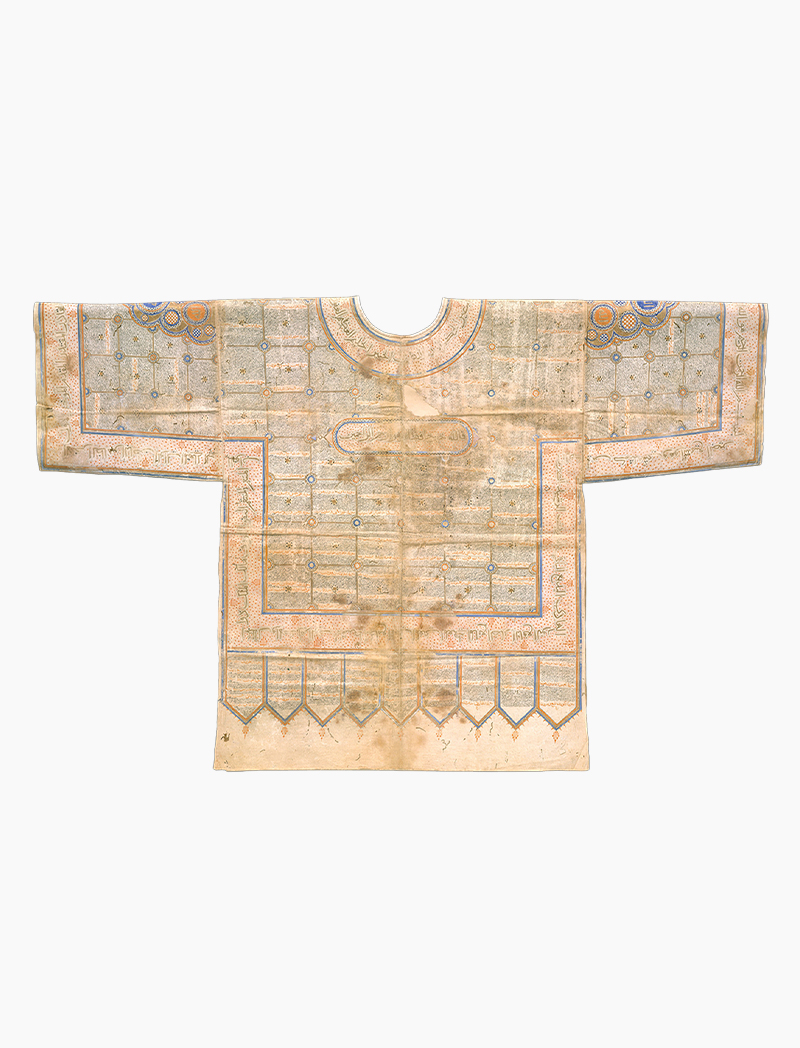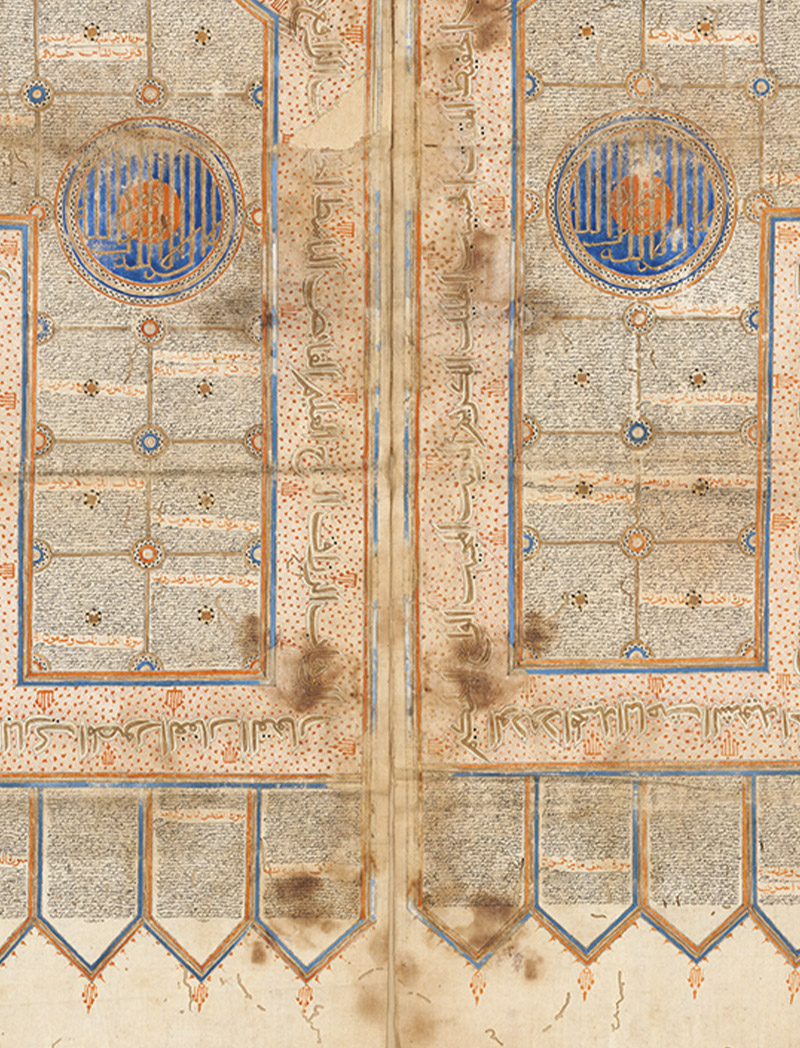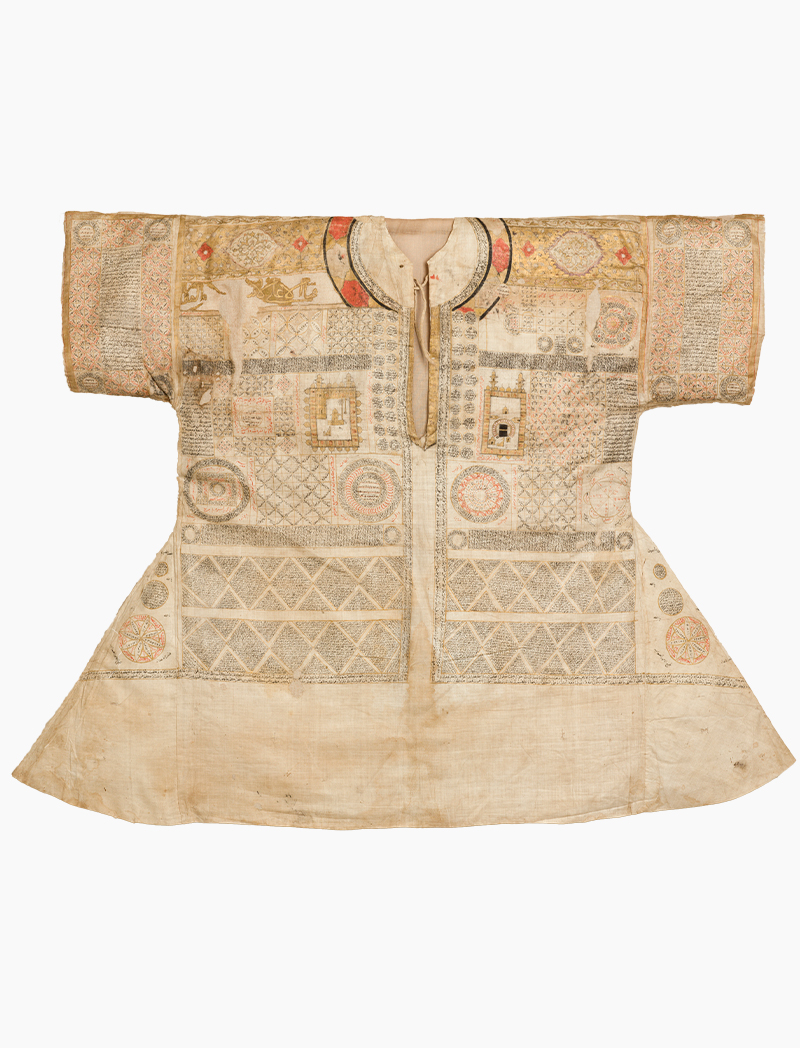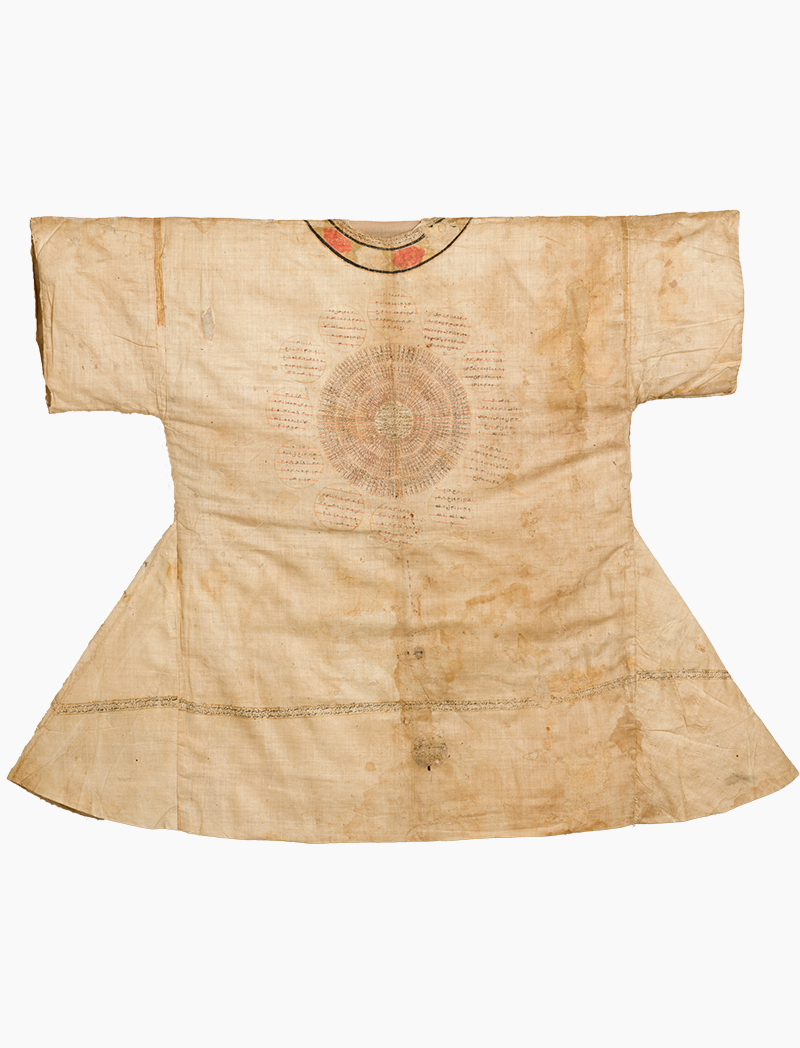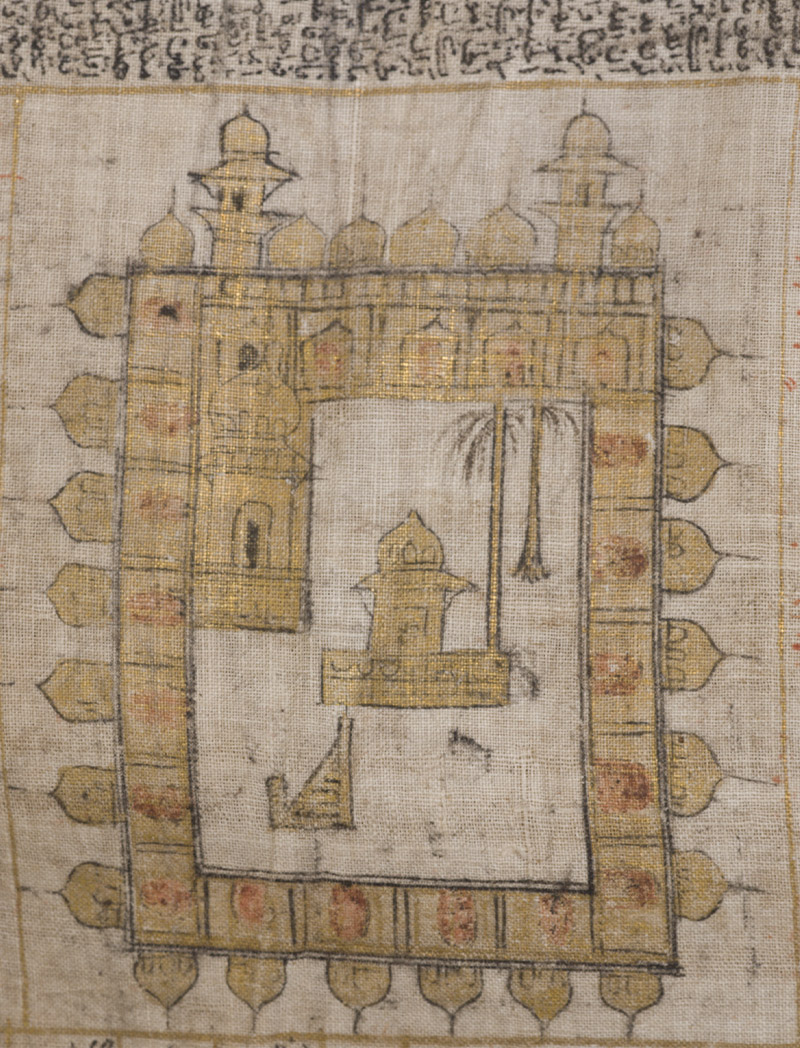PERSPECTIVES
How Talismanic Shirts Combined War and Literature
Fragile, ornamental and magical, talismanic shirts — found in Safavid, Ottoman, South Asian and West African cultures — are intended to wrap the wearer into the protective folds of the Qur’an. Their power was ordained not only through religious scriptures but also through heterodox Sufi traditions of healing and divination along with epic literature celebrating romances and battles of righteous heroes.
In South Asia, these shirts appeared between the fifteenth–seventeenth centuries, during the Sultanate reign in Delhi and the Deccan as well as the Mughal Empire. These shirts typically featured the entire text of the Qur’an inscribed across their body and would often also include elements of talismanic design such as vefḳ (magic squares) and abjad numerals. The Talismanic Shirt with Depictions of the Two Holy Sanctuaries, part of the Khalili collection, depicts the holy sanctuaries of Mecca and Medina, bearing a resemblance to schematic designs on manuscripts and pilgrimage certificates.
The shirt in the collection of the Victoria and Albert Museum (V&A) was produced during the reign of the Delhi Sultanate. Most talismanic shirts were actually made of starched cotton with gold, vermilion and red with white lead and lapis lazuli used for colour and illumination. Starch was used to stiffen the fabric — giving it a boxy and paperlike appearance — after which it was polished so that scribes and illuminators had a smooth surface to work on. The garment was constructed using three pieces of cloth: a large rectangular piece for the chest and torso and two smaller pieces for the sleeves. The entire text of the Qur’an is inscribed over the shirt, densely packed into grids with gold medallions at their intersection. Between the two grid sections, the ninety-nine names of Allah are calligraphed in gold Bihari script, an Indian style of writing Arabic. The two large roundels on this shirt, as well as the one in the Metropolitan Museum of Art’s collection, contain the shahada, an oath central to the Islamic faith. Besides professing the religion, these roundels are similar to the protective circular plates from various chainmail armour commonly used in battle at the time.
High-ranking warriors at the time wore these shirts to battles, because of which they came to be dubbed as “victory shirts” and “armour shirts.” The Persian poet Ṣāʾib Tabrizi, who had spent part of his life in Mughal India writes, “If burning arrows rain on the top of my head, I do not turn away / Because I have on my body a victory shirt (jāma-i fatḥ) made from an inscribed (dervish’s) mat (naḳsh-i būriyā).”




